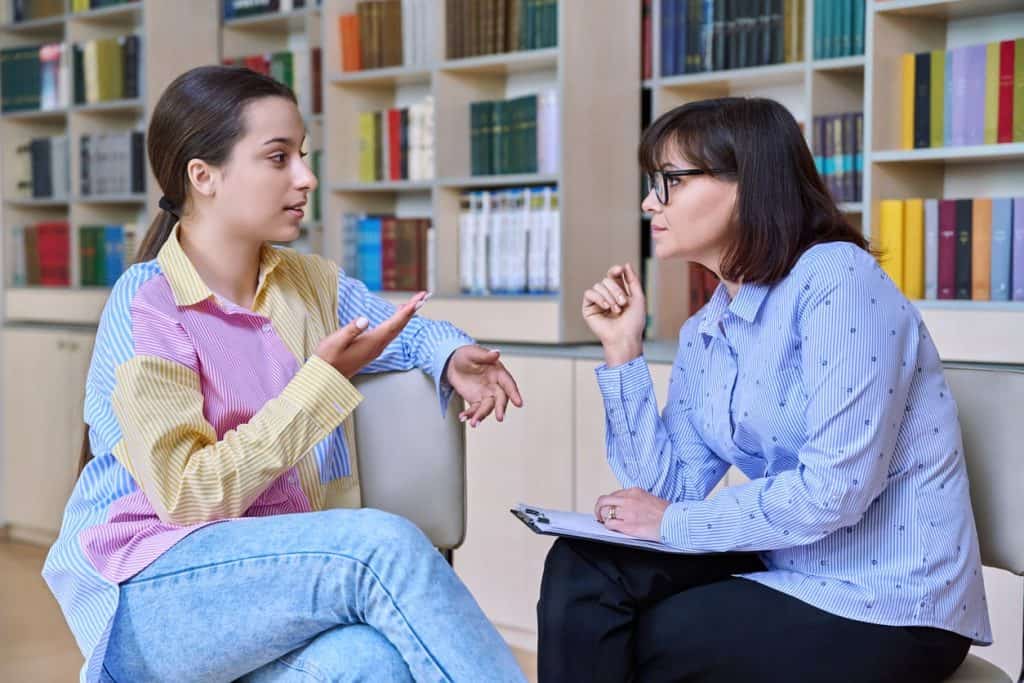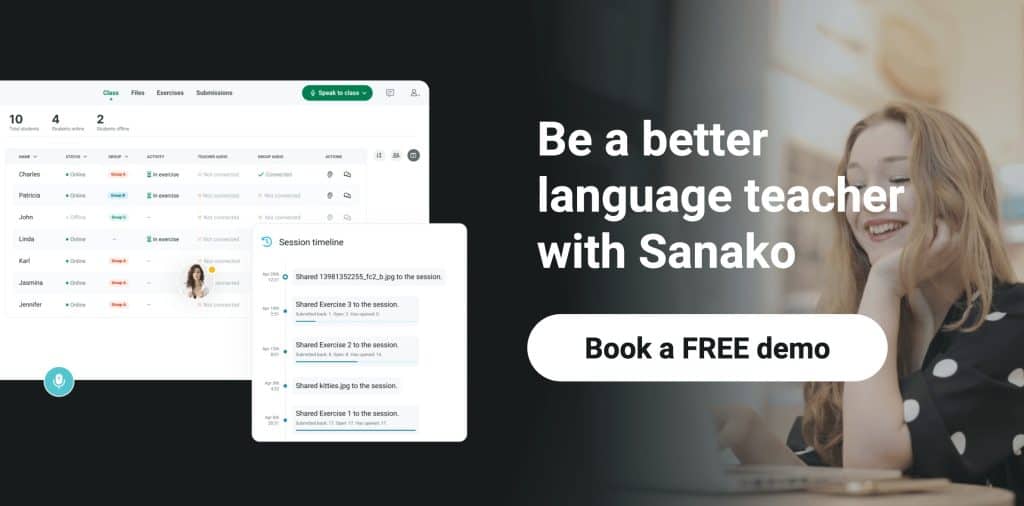Some things just go together. Whether that’s Lennon & McCartney, Laurel & Hardy or Batman & Robin – one without the other just doesn’t work. It’s the same with building speaking and listening skills when learning new languages – it’s impossible to communicate confidently and fluently if you’re not carefully listening to what’s being said to you. And not listening properly can mean that you miss the key information that’s being communicated – someone’s name, a flight time or the price in a business negotiation, for example.
It’s obviously important that language educators build their students’ listening skills, but it’s even more important to focus on developing active listening skills. So this blog post will help you identify what active listening skills are, why they are so important and how language teachers can develop them in the language classroom!
What is active listening?
Research on the topic identifies that there are two different ways of listening to learn a new language – active listening and passive listening.
Passive listening happens subconsciously – it’s what we do automatically every minute of every day. Our ears are open and we hear the sounds around us, whether we’re in a cafe or listening to a foreign language podcast. As a result we pick up familiar and unfamiliar words and phrases, but we’re not really focused on what we’re hearing.
On the other hand, active listening requires attention and concentration. It demands that we focus on what a speaker is saying rather than just passively hearing them. As such it also forces the listener to pay attention to other nonverbal cues such as tone, body language and facial expressions.
For language learners this means paying full attention to the words being spoken. It is important to really look for the meaning in what’s being said, so that you can then respond or take action based on what you’ve heard.
Why is it important to teach active listening skills?
As covered in a previous blog post on the topic, listening skills are vital for language learning success. Oxford (1993) argues that listening is ”the most fundamental” of all language skills, yet as Osada (2004) confirms, other language skills frequently receive direct and tailored focus from educators, who “often expect students to develop their listening skill by osmosis and without help.”
Strong listening skills are essential to enable language learners to effectively communicate in different countries and cultures. To do this learners must effectively combine speaking and listening skills, so students need opportunities to practice and develop the two in tandem.
Yet according to Frey, Fisher, & Smith (2019), the opposite of speaking for many students “is waiting to speak again, rather than listening.” Students need to learn how to maintain engagement with their conversation partner in a positive way. After all, when you do so the other speaker feels valued, heard and understood. Beyond building language skills, these are solid foundations for any successful conversation in any setting in either students’ L1 or L2.
How to improve your students’ active listening skills?
Ultimately the objective of any activity or exercise used by an educator should be to address the three As of active listening – these are attention, attitude, and adjustment.
- ATTENTION – It is vital to ensure that your students are fully tuned in to the speaker’s words and gestures. After all, listening is of the moment, and students often only get to hear the speaker’s words once. If they’re not fully concentrating on what’s being said, vital information may be misunderstood or missed completely.
- ATTITUDE – Even if they’re listening intently, it is still key for students to have an attitude of positivity and open-mindedness when conducting listening tasks. Active listening is only really possible if you want to do it – it doesn’t just happen. Students need to stay engaged even if they disagree with or are bored by what the other speaker is saying. Equally, it’s important for students to try to avoid planning what to say next – it’s difficult for language learners to listen and prepare at the same time.
- ADJUSTMENT – Sometimes students won’t know what their conversation partners are going to say, so it is key that they remain flexible and willing to follow the speaker as the story unfolds.
Of course every speaker likes to know that their audience is still listening, so encourage students to change their gestures and body language to show they’re still engaged. Nodding their heads, smiling and making small noises like “yes” and “uh huh”, all show that they’re still listening and encourage the speaker to continue.
There are loads of other tips and tricks that you can encourage your students to try!
- Practice – As always with language learning, the very best way to improve active listening skills is to do it again and again and again.
- Make eye contact – Even if you’re having a conversation virtually, this is still a key part of active listening and clearly shows that you’re fully engaged. Of course too much eye contact can be intimidating, so do look away on occasion. Up or to the side is always better than looking down!
- Look out for non-verbal cues too – Often it’s not just what people say, it’s how they say that’s really important. Keep an eye on your conversation partner’s tone of voice, gestures, posture and their facial expressions. They’ll give you a clear sense of how the speaker is really feeling.
- Give them time to speak – Constant interruptions do not make for an effective or enjoyable conversation. So give your conversation partner time to say what they need or want to say. This also gives you more time to carefully listen and understand their perspective before responding accordingly.
- Ask questions – A good question can show that you’ve been listening to what the speaker has been saying and helps clarify your response to their speech. It can also help keep the conversation on track rather than going off on a tangent because of a simple misunderstanding.
- Summarising – Similarly, occasionally repeating what’s been said also helps keep you both on track and reiterates to the speaker that you’ve been listening. It also gives them the opportunity to correct you if your understanding is not quite right.
How can Sanako Connect help educators to teach listening skills?
Sanako Connect is a powerful browser-based language teaching hub for schools and universities that helps language educators to improve students’ listening skills in addition to developing their other core language skills. It enables teachers to:
- Create engaging listening exercises using a wide variety of multimedia including your own voice, sound files, podcasts, presentations, videos, and other digital content.
- Assign exercises for students to demonstrate their understanding. Connect offers an easy way to create exercises for listen & repeat, gap-fill exercises, and much more.
- Easily divide students into pairs or small groups for conversation practice. After all, an effective and enjoyable conversation can only occur if both sides are listening to each other!
- Give students asynchronous access to the exercise/resources from any location with internet access, at any time and using any device, including laptops, Chromebooks, tablets or smartphones.
- Provide detailed feedback via Connect’s feedback functionality. Students can immediately see where improvements need to be made and can relisten to the original audio material to see where they went wrong.
If you’d like to find out more about how Sanako Connect could help to transform your students’ active listening skills, please click here or the banner below to learn more and to arrange your FREE demo!

